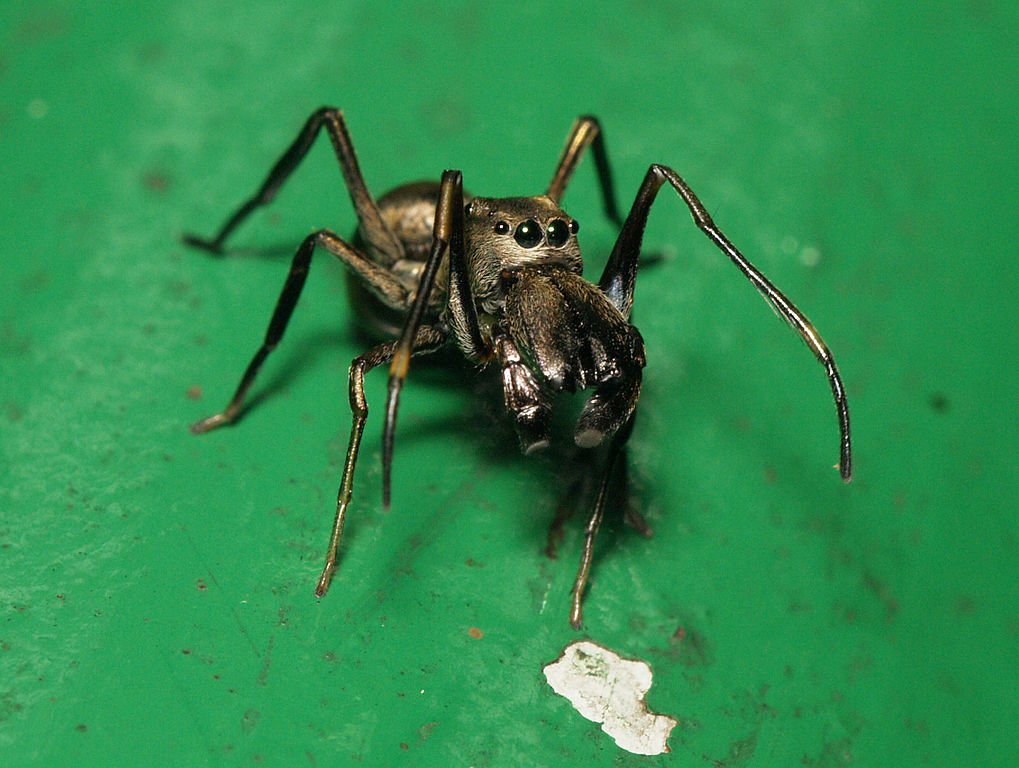People have long believed mammals to be the only animals capable of providing milk to their offspring naturally. However, scientists have found that some jumping spider moms also provide milk to their offspring. Researchers wanted to figure out if this means these ant-like spiders are similar to mammals in any other ways.
Jumping spider moms provide milk rich in proteins for a long time before the babies start feeding on their own. According to scientists, their milk contains nearly four times as much protein than what’s normally found in cow’s milk. Researchers described this behavior of jumping spider moms in a study published on Nov. 30 in the journal Science. The study suggests the behavior is more common in non-mammals than previously thought.
Scientists discovered that even though the nursing wasn’t of critical importance for the survival of the young spiders, the mother’s presence during their earliest days contributed to their strength, growth and survival. They clean and repair the damage made to the nest and remove parasites which could compromise their offspring’s safety, all while nursing.
“Traditionally, we think the tiny creatures are too small to do complex things, like extended parental care,” lead author Zhanqi Chen of the Xishuangbanna Tropical Botanical Garden at the Chinese Academy of Sciences said in a news release. “But this spider performs similar to human beings, they could construct nests for the young, do the cleaning, feed them and care for the offspring after they were sexually mature.”
The growth and development of many species in the animal kingdom depend on the early care their mother provides. For example, many bird species are seen hunting and feeding their offspring until they are old enough to fly.
Mammals feed their babies by providing their own nutritional substances, like milk, for example. Mammals are seen nursing their children for a longer time, especially in the case of those with longer lifespans. Meanwhile, they teach their offspring everything they need to know to survive.
For this recent study on jumping spider moms, scientists watched the behavior of Toxeus magnus, an ant-mimicking jumping spider, as it fed its offspring from its stomach. Toxeus magnus is one of the 14 types of jumping spiders which appear outwardly to resemble ants. They have a fake waist and reflective hair which gives them the same color and shiny appearance as ants. Their behavior also resembles that of ants as they wave their front legs while walking in erratic patterns. In fact, many people don’t even realize they are spiders.
The new study found that initially, baby jumping spiders drink tiny amounts of a milk-like substance from the surface of the nest. A week later, jumping spider moms begin feeding their children from the opening through which they lay their eggs. The baby spiders live in the nest with their mother and feed on her milk for about 40 days, which ends up being two weeks before they can begin hunting for their own food.
According to the researchers, jumping spiders’ milk may have evolved from trophic eggs, which function as food for newborn offspring in some spider species. However, the mothers usually supply trophic eggs for one-time use, while jumping spider moms supply milk continuously until they are almost sexually mature.





